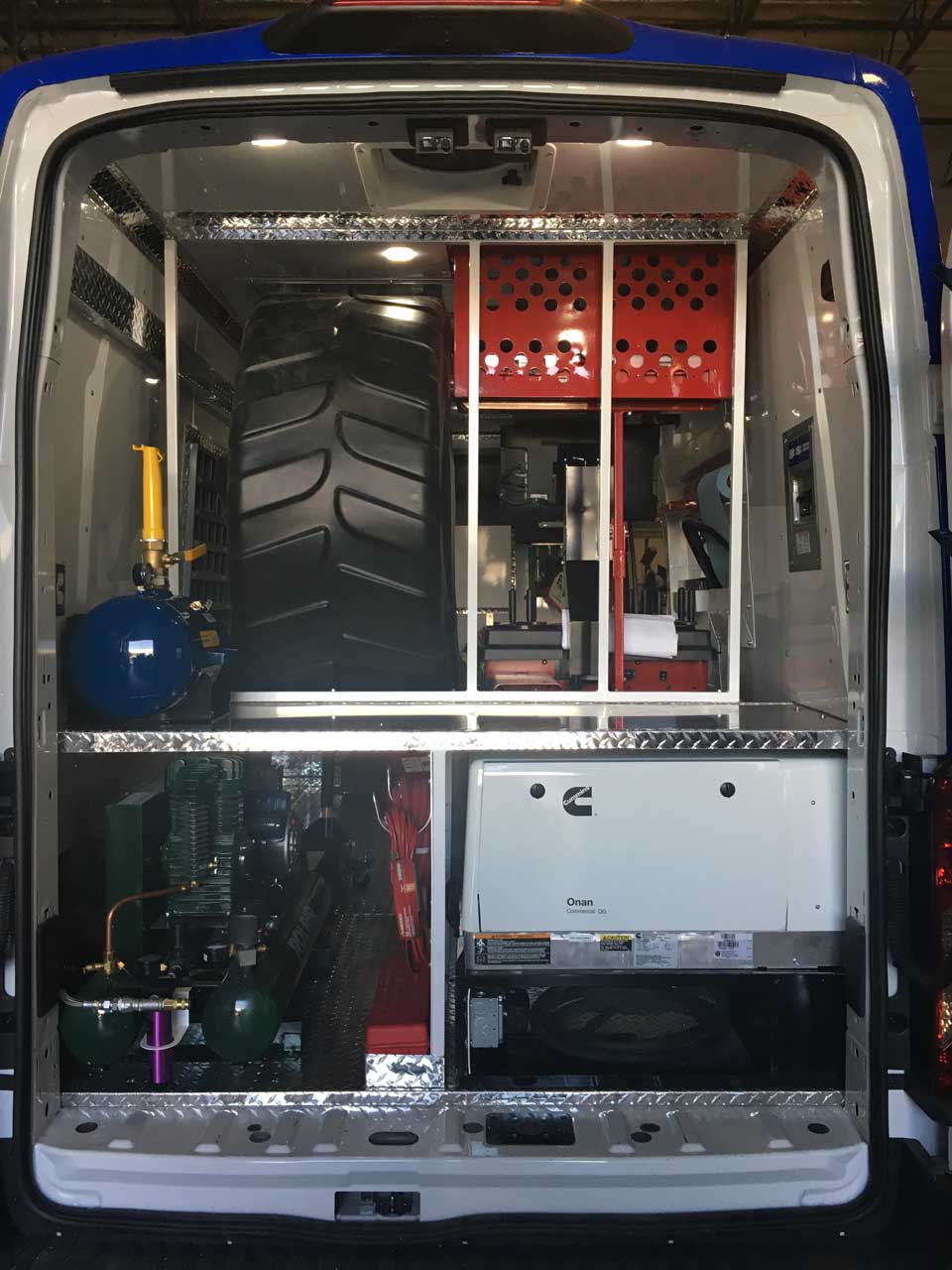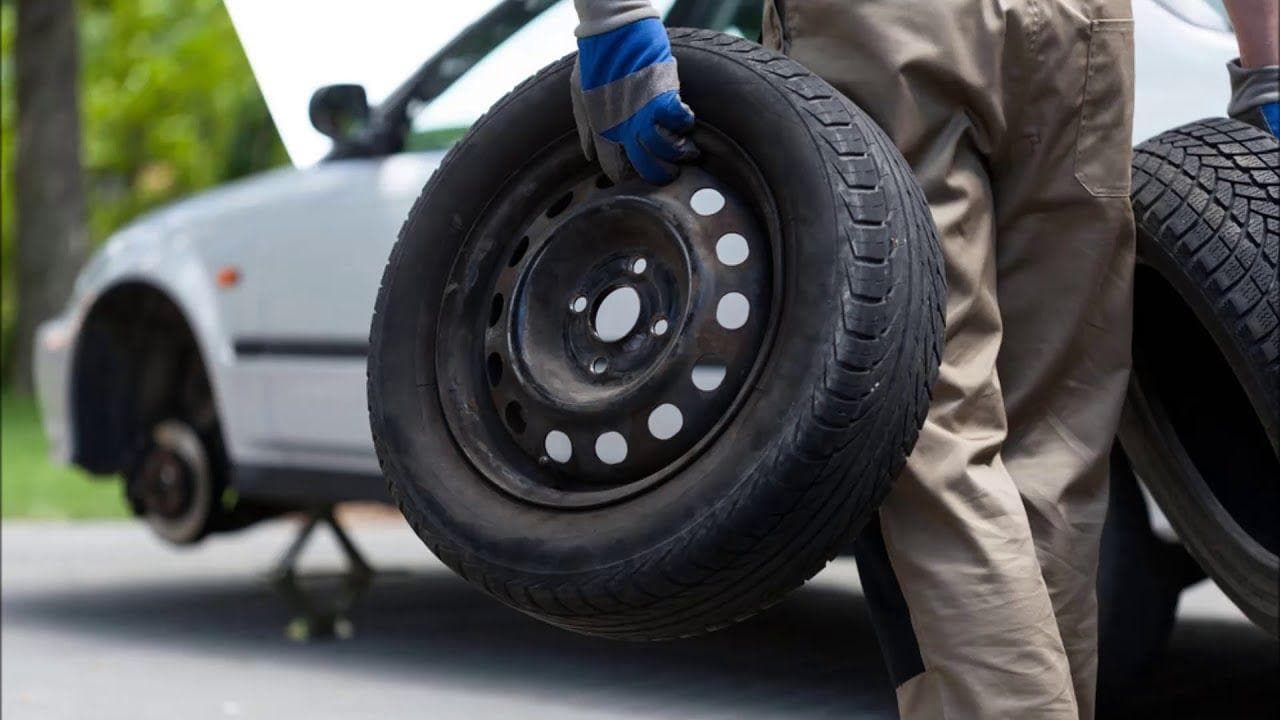Emergency Mobile Tire Service Available in Las Vegas
Emergency Mobile Tire Service Available in Las Vegas
Blog Article
Tire Solution: Proven Approaches for Optimum Tire Upkeep and Care
From ensuring appropriate tire stress to normal rotation and positioning, there are tried and tested methods that can significantly extend the life expectancy of your tires and boost total driving experience. Allow's dive into the world of tire service and find the tricks to keeping your tires in first-class form for the lengthy haul - Mobile Tire Repair Las Vegas.
Significance of Tire Pressure
Appropriate tire stress is an essential consider ensuring optimal vehicle performance and safety when traveling. Maintaining the recommended tire pressure degrees given by the maker uses numerous advantages. First of all, adequate tire stress advertises better fuel effectiveness, as under-inflated tires can bring about boosted rolling resistance, creating the engine to function tougher and eat even more fuel. Secondly, correct tire stress makes sure even tread wear, boosting tire durability and saving cash over time by delaying the demand for early replacements. Furthermore, properly blew up tires contribute to boosted handling and stopping capabilities, critical for risk-free driving in various roadway problems. Over-inflated tires, on the other hand, can result in minimized traction and a harsher experience. Conversely, under-inflated tires are vulnerable to overheating, which can cause blowouts and mishaps. Consistently adjusting and inspecting tire pressure, particularly eventually trips, is a simple yet efficient means to boost automobile efficiency, extend tire life expectancy, and prioritize safety on the road.
Tire Rotation Guidelines
When thinking about tire turning standards, it is vital to recognize the relevance of this maintenance task in making best use of tire lifespan and preserving ideal lorry performance. Tire rotation involves changing the position of each tire on a car to guarantee also walk wear. Front tires tend to wear quicker than back tires as a result of steering forces, making regular rotation essential for well balanced wear patterns. The suggested rotation pattern varies depending upon whether a car is front-wheel, rear-wheel, all-wheel, or 4x4. Generally, tires should be rotated every 5,000 to 7,500 miles, or as suggested in the automobile handbook. Overlooking tire rotation can bring about unequal wear, affecting handling, grip, and possibly compromising car safety. By adhering to proper rotation guidelines, drivers can prolong the life of their tires, improve gas efficiency, and enhance total driving experience. Normal rotation is an easy yet effective upkeep practice that adds considerably to tire longevity and lorry performance.

Advantages of Wheel Alignment
Making certain correct wheel placement after tire turning is vital for preserving balanced wear patterns and optimizing vehicle performance. Furthermore, right wheel placement aids to extend the lifespan of visite site your tires. Misaligned wheels can cause uneven tire wear, leading to premature tire replacement and increased click for source upkeep expenses.

Tire Footstep Deepness Check
Doing a normal inspection of tire step depth is crucial for preserving safe driving problems and prolonging the life expectancy of your tires. The walk on your tires plays a crucial role in offering grip, specifically in unsafe or damp conditions. To check your tire tread depth, you can use a walk depth gauge or the cent test. The suggested step depth goes to the very least 2/32 of an inch. If the walk deepness is listed below this limit, it is time to change your tires to make certain ideal efficiency and safety and security when driving. Irregular walk wear can suggest problems with tire pressure, alignment, or suspension, highlighting the importance of routine walk depth checks. Overlooking to keep track of and preserve correct walk depth can bring about decreased grip, longer stopping ranges, and an enhanced danger of hydroplaning. By including tire walk depth explore your routine upkeep routine, you can drive with self-confidence recognizing that your tires remain in leading condition.
Seasonal Tire Assessment
An extensive analysis of tire problem customized to certain weather condition conditions is important for keeping optimal efficiency and security throughout the year. Seasonal tire evaluation is a fundamental facet of tire upkeep that guarantees tires prepare to encounter the difficulties posed by various weather. To prepare for winter season, it is necessary to check the i thought about this tire pressure routinely as chilly temperature levels can cause tire pressure to drop. Checking tire step depth is also important to make certain adequate traction on snow and ice-covered roads. Furthermore, looking for indicators of damage, such as cracks or bulges, can assist stop possible tire failures. As the periods adjustment, it is crucial to evaluate tire problem and make any kind of essential changes to guarantee safe driving. By conducting routine seasonal tire evaluations, chauffeurs can extend tire life expectancy, improve fuel efficiency, and most importantly, guarantee a protected driving experience in varying weather - Mobile Tire Change Las Vegas.
Conclusion
In conclusion, preserving proper tire stress, turning tires routinely, straightening wheels properly, keeping track of step depth, and conducting seasonal assessments are important techniques for ideal tire treatment. By complying with these proven techniques, drivers can ensure their tires last much longer, carry out far better, and add to total vehicle security. It is important to focus on tire upkeep to avoid crashes, improve fuel performance, and prolong the life expectancy of tires.
Adequate tire pressure advertises far better fuel effectiveness, as under-inflated tires can lead to raised rolling resistance, causing the engine to work tougher and consume more fuel.When taking into consideration tire rotation guidelines, it is necessary to recognize the importance of this maintenance task in making the most of tire life expectancy and preserving optimal car performance. Seasonal tire examination is a basic facet of tire upkeep that guarantees tires are all set to deal with the challenges presented by different weather condition conditions. By carrying out routine seasonal tire evaluations, chauffeurs can extend tire life expectancy, boost gas performance, and most importantly, make certain a protected driving experience in differing weather problems.
In conclusion, preserving correct tire pressure, turning tires frequently, lining up wheels properly, keeping an eye on step deepness, and carrying out seasonal inspections are essential practices for optimum tire treatment.
Report this page